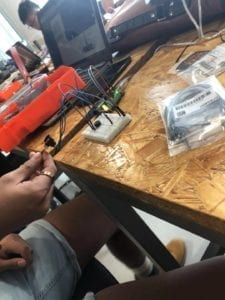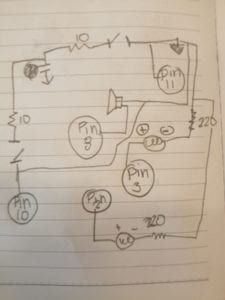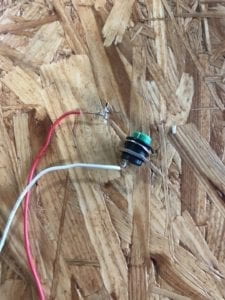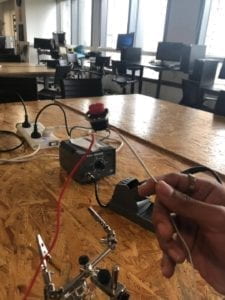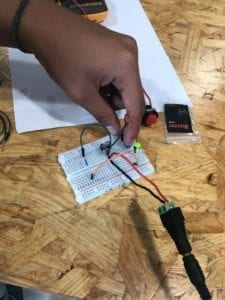Interactivity ,as explained in the Art of Interactive Design, is “under understood”(Crawford 1). Interactivity as presented in the reading of Introduction to physical computing is a series of “ listen[ing], think[ing], and speak[ing]”(Igoe XX). Interactivity is all around us, every action we do has a response and a process. This means that everything we do in our daily day is engulfed in the term of interactivity. I would claim that, interactivity is the sending of a message or messages, the understanding of such information and finally a reply.
During the semester, we have done various projects which have shaped my understanding of interactivity. The projects all have involved many different aspects which, as a whole, have deepened my understanding of creativity. From the main projects we conducted the two most important have been the sensor project, and the Lamp project. Both projects had aspects of interactivity. For example in the sensor project, the input from the distance sensor sent a message to the ARDUINO which in turn reads the information and sends an output. In the case of the sensor project, the output was a tune with a light. Although the sensory project was more complicated than the Lamp project, the lamp also introduced the idea of input and output. The project helped me understand how the machine interacts with the human. Furthermore, a third project that was helpful in the understanding of interaction was the button game project. In this project we programed a game based on the amount of times each player pressed a button. The Arduino read the messages and showed a light to the victor of the game.
The project was based on a future technology, which depended on the interactivity of the machine. The group brainstormed a machine that first of all received several messages from sensors in the user, after that the machine would translate the messages received and make an educated guess of the situation of the user. Finally, the machine with the information received by the sensors and the guess, would, as an output, prepare food for bettering the mood of the user. The project is very clear in the three aspects of interactivity, first the machine receives a message, after it is interpreted by the machine and finally with that interpretation the machine can respond to the needs of the user. This is very similar to what Igoe and O’sullivan say computers have “listen, thinking, and speaking” (XX). In this case the Machine has the ability to listen to the user needs, translate to know what he needs, and finally speak by serving food.
The project, was inspired by the sensory project. The sensor project showed us how to collect information to send without any kind of words. In this way we designed a machine that would use sensors to collect information from the user in hopes to decipher the state of mind the user had, sending a message to the kitchen to prepare food. The Project takes the three aspects of interactivity and utilizes them in sensors, reading of emotions, and preparation of food.
